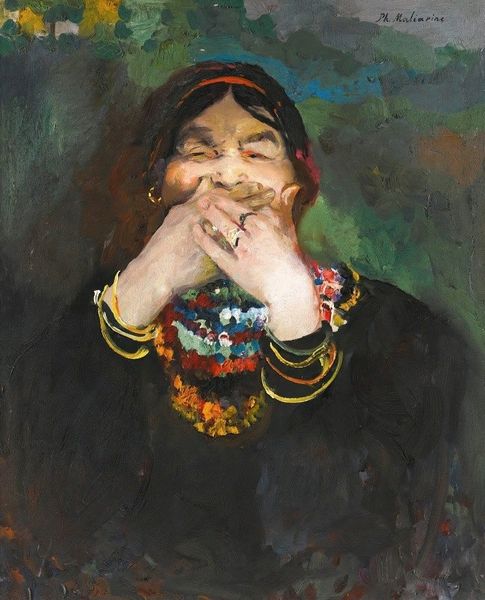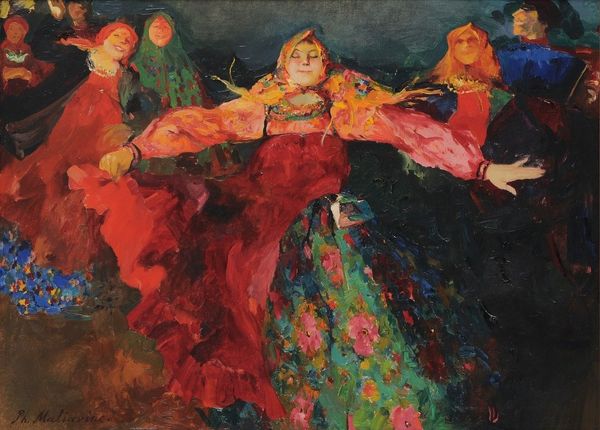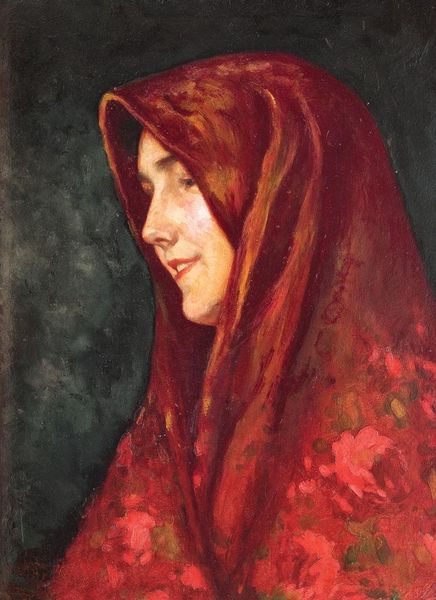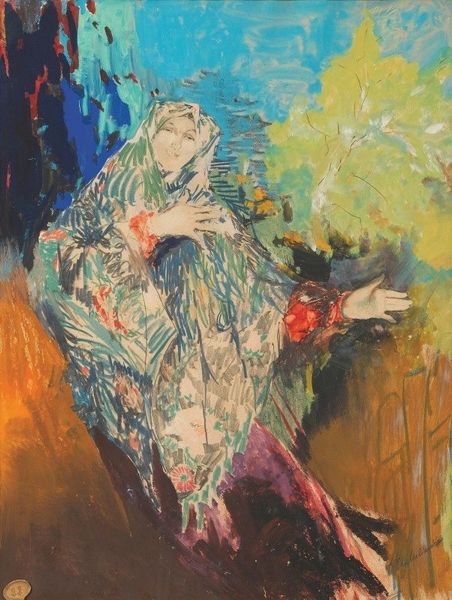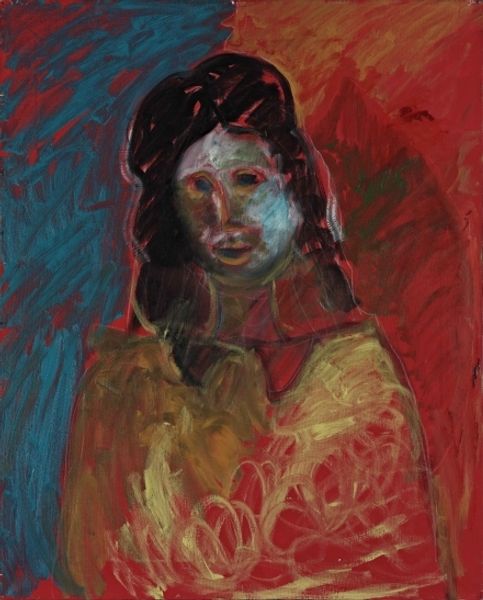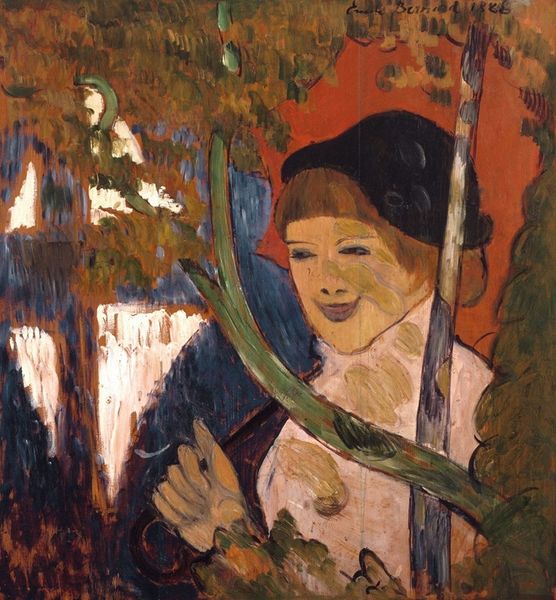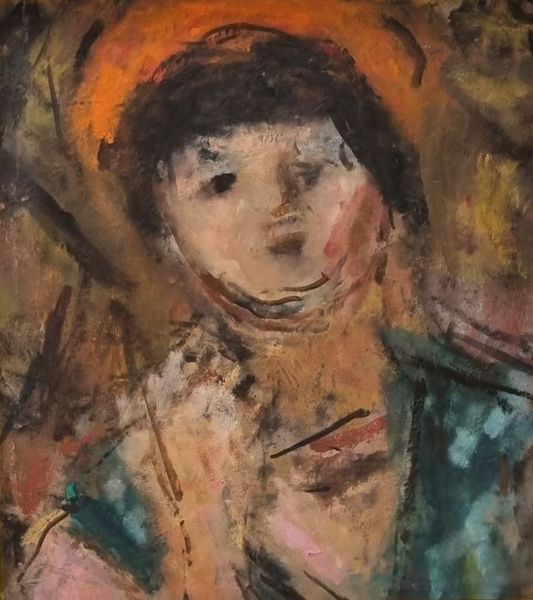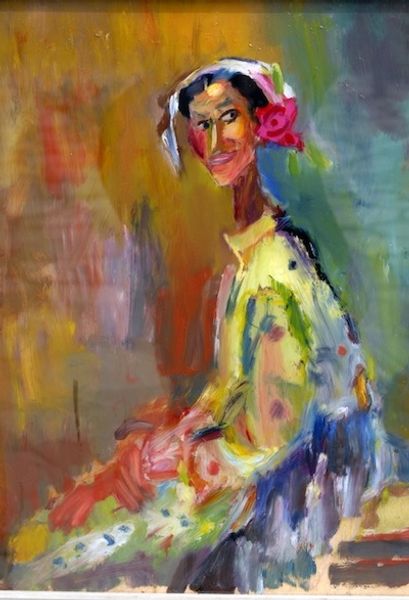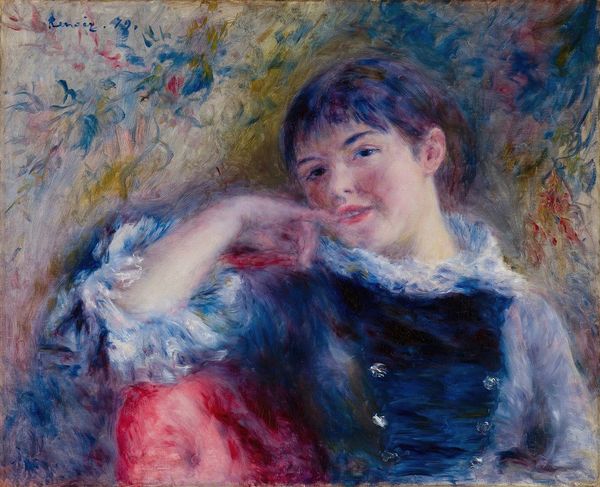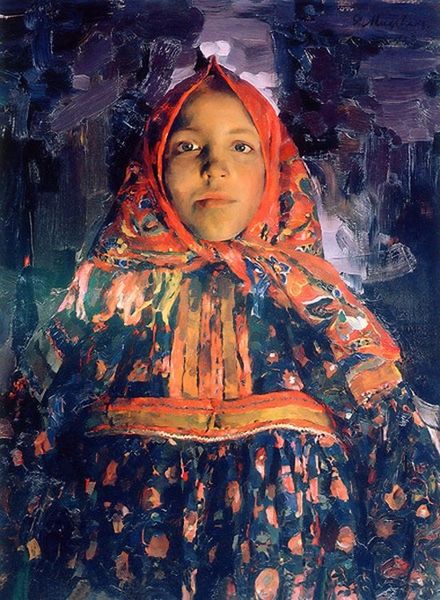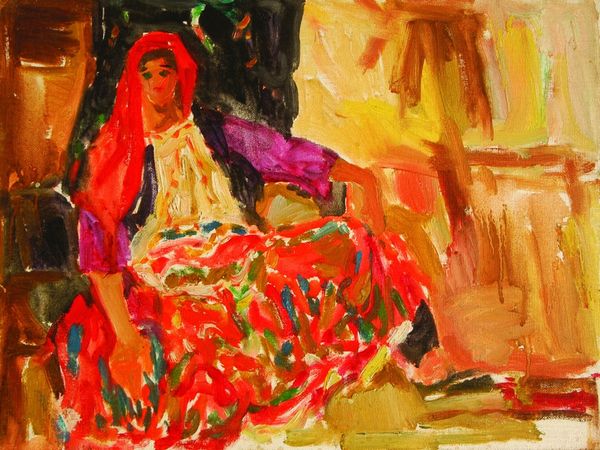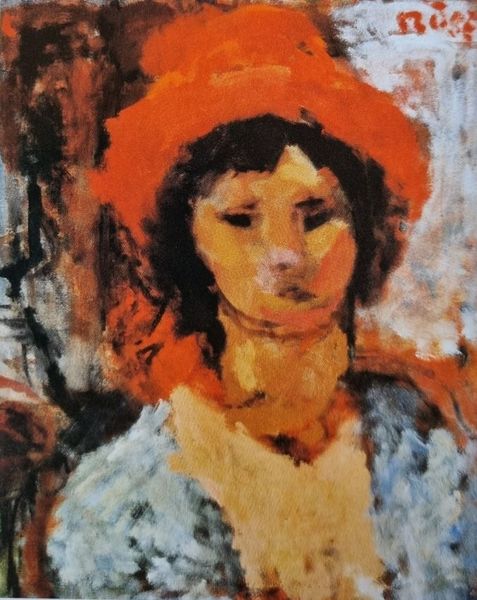
oil-paint
#
portrait
#
figurative
#
oil-paint
#
figuration
#
oil painting
#
expressionism
#
russian-avant-garde
#
expressionist
Copyright: Public Domain: Artvee
Curator: Let’s take a look at Filipp Malyavin’s "Laughing Girl," an oil painting that vibrates with expressive energy. What are your initial impressions? Editor: Pure joy, but almost manic. The colors, particularly the red, are so intense. The composition seems intentionally raw, unrefined. It's a fascinating explosion of materiality, but is it bordering on chaos? Curator: I see your point. The color red often signifies passion, but can also suggest danger or warning. The subject is shrouded in it— a visual cacophony. Yet, the laughing face implies innocence, naivety, even acceptance of something potentially volatile. Look at how her outstretched hands add to the welcoming gesture. What symbols do you notice? Editor: There's a folkloric quality about the garment she is wearing. That, with the laugh, points toward a deep cultural association with female laughter being considered rebellious or dangerous in traditional societies, a sort of ecstatic defiance. The artist likely pulls from this symbolic connection. It asks us: What is she laughing at? Is it mocking or purely gleeful? Curator: Or is her laughter simply born from a lived experience and the labour implied? This work resonates with the avant-garde movement because Malyavin breaks down social perceptions of what Russian peasant life represented during this period through expressive handling of the oil paint medium. It moves past strict representations and idealizations of Russia that were so popular at that time. This artwork uses labor in terms of making and also confronts labor of subject’s origins. The visible brushwork emphasizes the physicality of painting, turning our attention to the artist’s labor. Editor: And yet, that expressive approach elevates a moment to a universal emotional register that we can feel to this day. I find it captivating. Curator: It’s precisely that push and pull between the personal and the political, the individual expression and collective memory, that makes Malyavin's work so relevant, still provoking such discussions on female agency, expression, and lived experience. Editor: Yes, a powerful reminder of how symbols evolve over time and can contain multitudes.
Comments
No comments
Be the first to comment and join the conversation on the ultimate creative platform.
